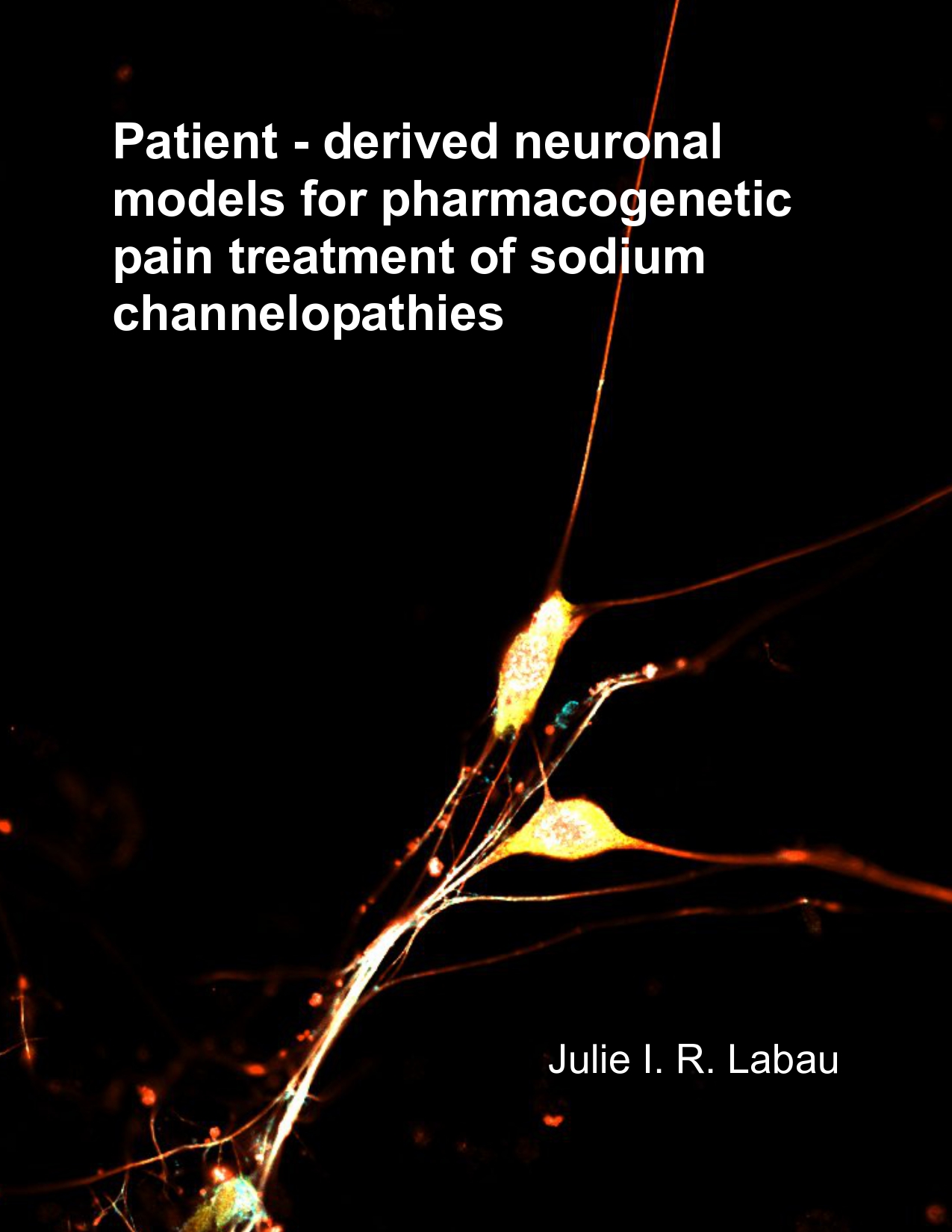On-Site PhD conferral Julie Isabelle Romane Labau
Supervisors: Prof.dr. H.J.M. Smeets, Prof.dr. C.G. Faber
Co-supervisors: Dr. S. Dib-Hajj, Yale University, Dr. S.G. Waxmann, Yale University
Keywords: pain, lacosamide, stem cells, sodium channels
"Patient-derived neuronal models for pharmacogenetic pain treatment of sodium channelopathies"
Chronic pain affects nearly 1 in 4 individuals worldwide. Despite its global spread, patients systematically report lack of efficacy and severe side effects from available treatments, leading to years of trial-and-error management for little to no improvement. Lacosamide, originally developed for epilepsy, was found to reduce pain in a sub-group of patients. This research shows that some mutations in genes involved with the transmission of pain signals can alter drug effects. Another discovery was that one particular mutation, which completely prevented pain relief in patients, was responsible for linking the lacosamide molecules to their receptors, which then block the pain signal. The identification of such mutations can predict how a patient will respond to the drug before even receiving it. Nowadays, the patient’s own cells can be tested against different drugs. Stem cells can be obtained from a skin sample and turned into neurons. However, they are imperfect copies of the patient’s actual neurons. This thesis shows ways to improve cell quality, notably by injecting them into the rat nervous system and by using electrical stimulation.
Click here for the live stream.
Also read
-
10 Sep13:00
PhD Defence Iva Halilaj
"Leveraging Patient Decision Aids and Decision Support Systems: Towards More Personalised Medical Treatments"
-
11 Sep16:00
PhD Defence Ivo A.O. Beeren
"Cartilage and Bone in Concert: Biofunctional Scaffolds for Osteochondral Regeneration"
-
12 Sep10:00
PhD Defence Lukas Andreas Duffner
"Promoting Healthy Brain Aging through Cognitive Activity and Social Contact; A Translational Journey from Neuroscience to Community"
